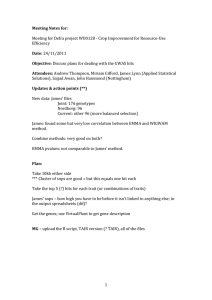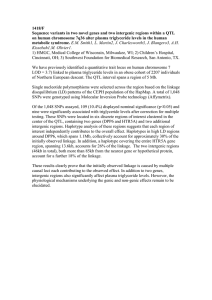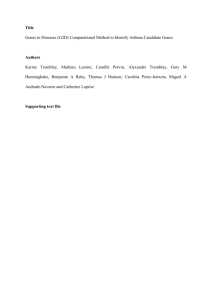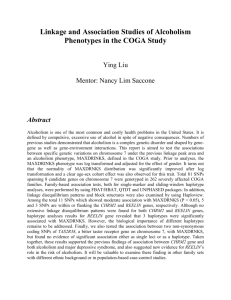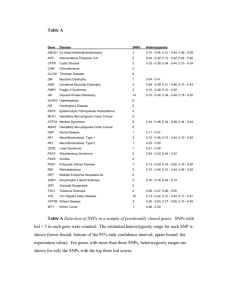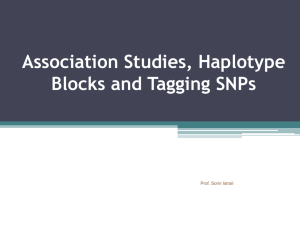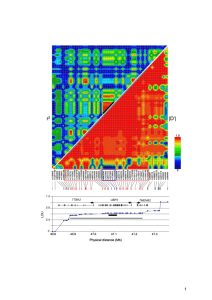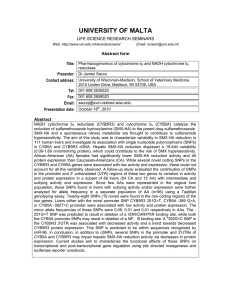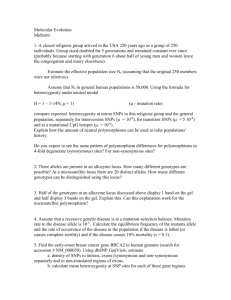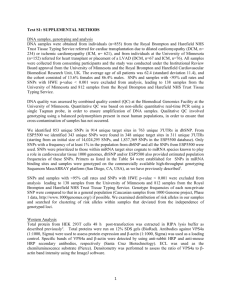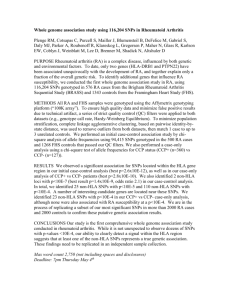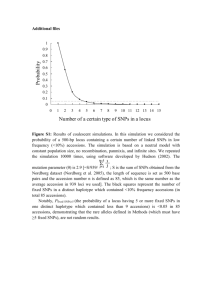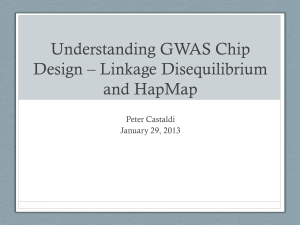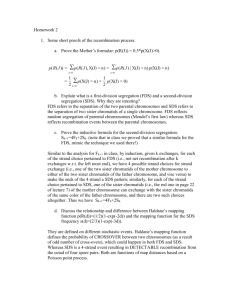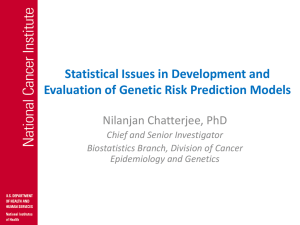Supplemental Table 3. Logistic regression model analysis of CRC
advertisement
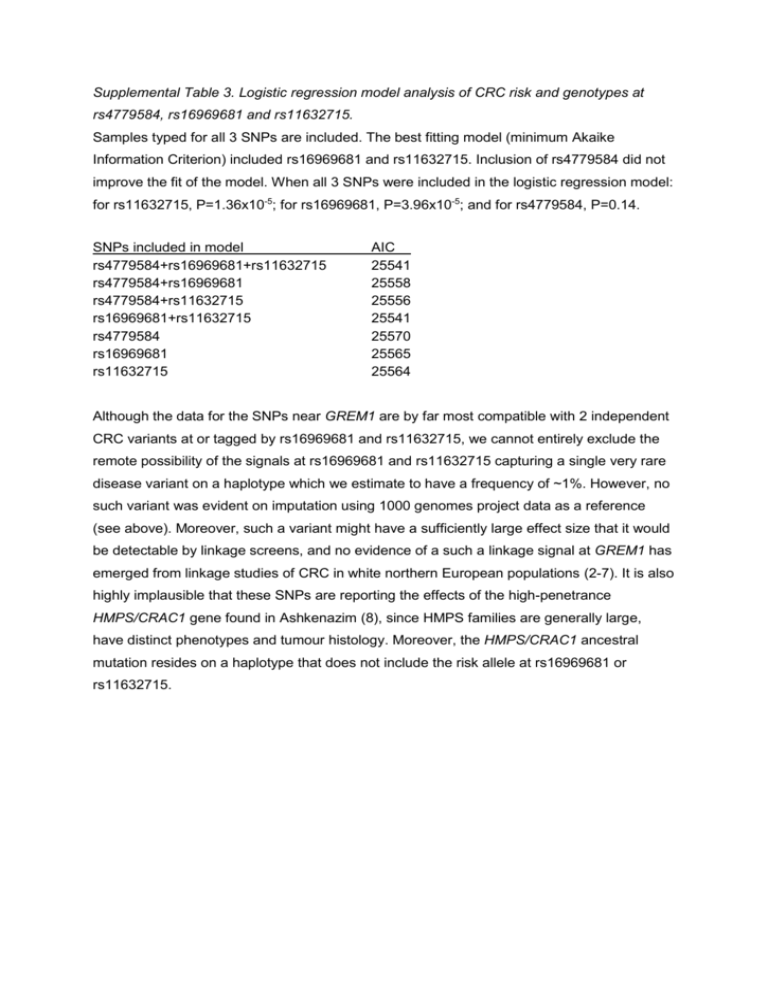
Supplemental Table 3. Logistic regression model analysis of CRC risk and genotypes at rs4779584, rs16969681 and rs11632715. Samples typed for all 3 SNPs are included. The best fitting model (minimum Akaike Information Criterion) included rs16969681 and rs11632715. Inclusion of rs4779584 did not improve the fit of the model. When all 3 SNPs were included in the logistic regression model: for rs11632715, P=1.36x10-5; for rs16969681, P=3.96x10-5; and for rs4779584, P=0.14. SNPs included in model rs4779584+rs16969681+rs11632715 rs4779584+rs16969681 rs4779584+rs11632715 rs16969681+rs11632715 rs4779584 rs16969681 rs11632715 AIC__ 25541 25558 25556 25541 25570 25565 25564 Although the data for the SNPs near GREM1 are by far most compatible with 2 independent CRC variants at or tagged by rs16969681 and rs11632715, we cannot entirely exclude the remote possibility of the signals at rs16969681 and rs11632715 capturing a single very rare disease variant on a haplotype which we estimate to have a frequency of ~1%. However, no such variant was evident on imputation using 1000 genomes project data as a reference (see above). Moreover, such a variant might have a sufficiently large effect size that it would be detectable by linkage screens, and no evidence of a such a linkage signal at GREM1 has emerged from linkage studies of CRC in white northern European populations (2-7). It is also highly implausible that these SNPs are reporting the effects of the high-penetrance HMPS/CRAC1 gene found in Ashkenazim (8), since HMPS families are generally large, have distinct phenotypes and tumour histology. Moreover, the HMPS/CRAC1 ancestral mutation resides on a haplotype that does not include the risk allele at rs16969681 or rs11632715.


